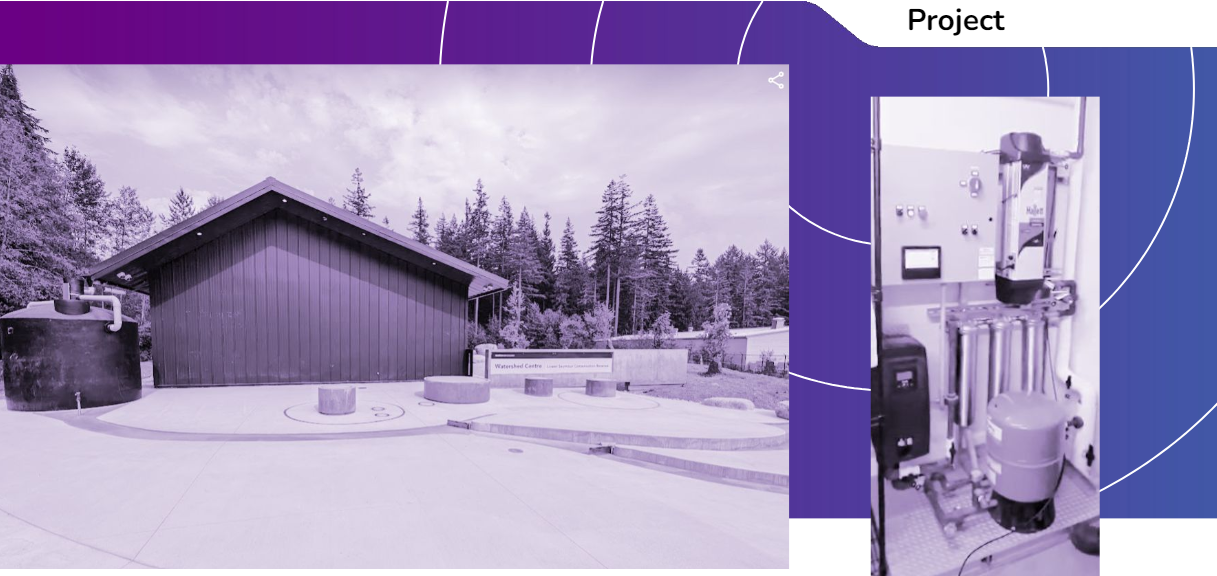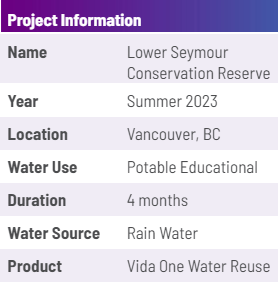Cleanflo’s innovative approach at the Lower Seymour Conservation Reserve Administration Building, positioned adjacent to the Capilano, Canada’s largest direct filtration water treatment plant, showcases a commitment to sustainable water reuse and educational engagement. Among the four water management systems implemented, the third and fourth are specifically designed to facilitate hands-on educational experiences. These systems capture and repurpose rainwater, not just for reuse, but to provide interactive learning opportunities about water’s journey and importance. To ensure the safety and suitability of the water for such close interaction, especially with children, the design incorporates a self-priming booster pump and a triple cartridge filter system. Furthermore, a dual bulb UV treatment with NSF 55-Class A certification guarantees that the rainwater reaches potable quality standards.

LSCR: Administration Building: Potable System Educational

The educational systems at the Lower Seymour Conservation Reserve Administration Building offer a unique, tangible way for participants to engage with the hydrological cycle. By opening a tap, users can release treated rainwater into simulated watercourses crafted into the concrete landscape, illustrating the natural journey of water from rivers to the ocean and back. This innovative design not only makes learning about water cycles interactive but also emphasizes the practical application of sustainable water treatment technologies. The meticulous attention to water quality, through advanced filtration and disinfection processes, ensures that these educational experiences are safe, enriching, and aligned with environmental stewardship principles.
Benefits
The benefits of implementing such a specialized water reuse system for educational purposes at the Lower Seymour Conservation Reserve are manifold. By transforming rainwater into a safe, interactive educational tool, Cleanflo has created an immersive learning environment that highlights the significance of water conservation and treatment. This project not only reduces the environmental footprint by repurposing rainwater but also fosters a deeper understanding and appreciation of the hydrological cycle among participants. The use of potable-quality treated rainwater for educational simulations serves as a model for sustainable practices, demonstrating the viability of advanced water management solutions in promoting environmental education. Ultimately, this initiative contributes significantly to raising awareness about water conservation and the technology behind water treatment, underscoring the importance of integrating sustainability into educational experiences.


